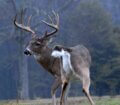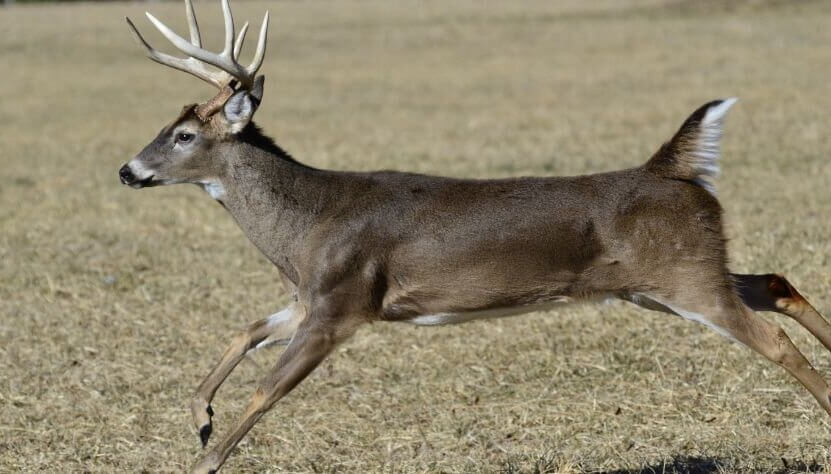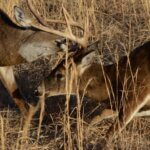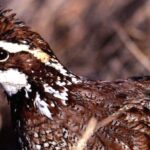Editor’s Note: Bucks fight for several reasons. When you hear antlers clashing, that doesn’t necessarily mean that bucks are fighting to the death. Instead, the bucks only may be pushing each other around. The more you know about buck fights, the better you’ll understand when to go and when to stay when you hear antlers clashing.
Most battles to the death take place among older-age-class bucks when the buck/doe ratio is evenly divided.
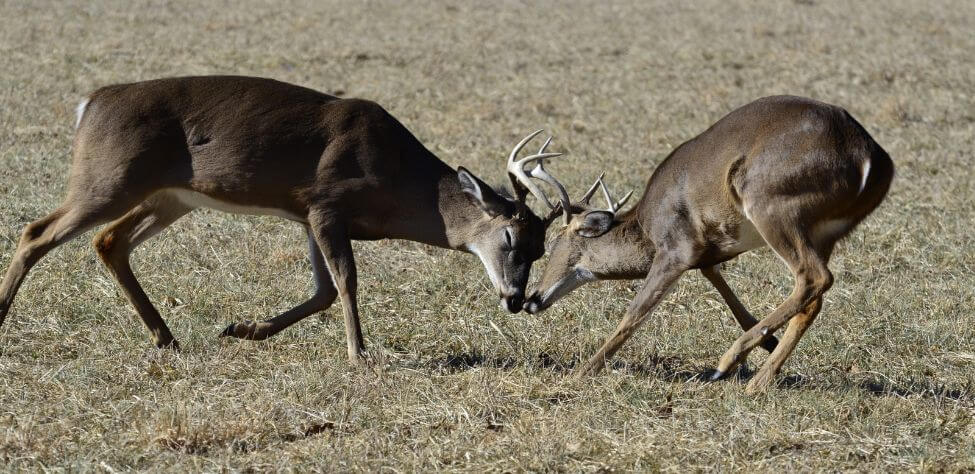
Terry Rohm:
“Bucks do fight to the death but most of the time not by choice,” Terry Rohm, longtime, avid deer hunter from Buckhead, Georgia, says. “Often their antlers are locked, and they’re unable to get them apart. The bucks either starve to death, or one deer may break the other’s neck. A buck fight usually doesn’t last a long time. If their antlers don’t lock, the fight only will last maybe one minute because the bucks will be very aggressive. I’ve seen some deer with their eyes punched out by antlers while fighting, and I’ve seen gashes in their necks before.”
Dr. Hilburn Hillestad:
The late Dr. Hilburn Hillestad, a national-known wildlife biologist from Kennesaw, Georgia, reported that, “Some research tends to indicate that when bucks move into the older-age classes, they often fight so much during the rut, their bodies are so beat-up, and their wounds so severe that they die when the rut’s over, because of the wounds they’ve received earlier.”
David Nelson:
“Sometimes bucks are so injured they can’t survive a fight,” wildlife biologist David Nelson reminds us. “The animals are very aggressive during this time. I’ve heard several accounts of bucks locking horns, and either one or both animals starving to death, or one breaking the other’s neck. Hunters seeing bucks with broken tines or main beams broken in combat isn’t uncommon, since bucks fight hard and often hook each other. If bucks get hit just right in a vital spot, the blow can be fatal. Some individual bucks even have been killed during the rut by bucks in enclosures.”
A buck in the rut is highly unpredictable and dangerous, even if the buck is in a pen and is a family pet. Never enter an enclosure or attempt to pet or even get close to a tame deer when the rut’s occurring.
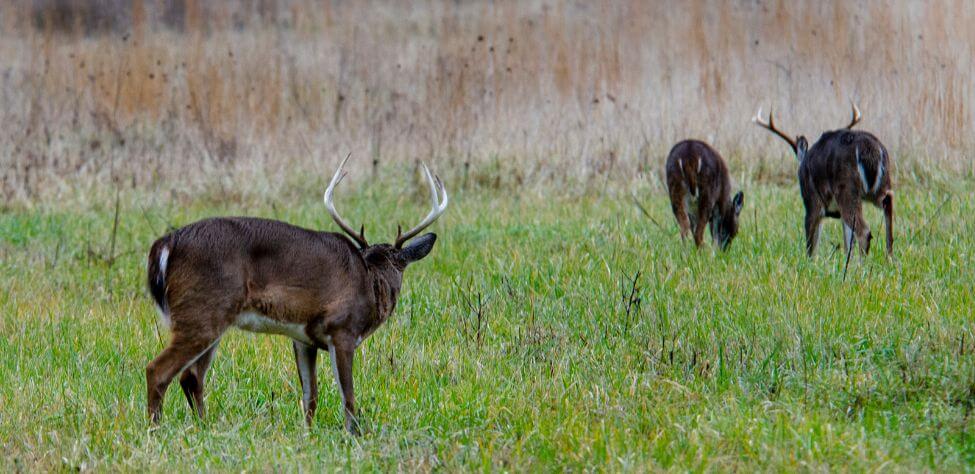
Fake Buck Fights with Rattling Antlers:
Most of us have learned if we can simulate a fake buck fight, we often can call in a buck. By rattling antlers together, we can produce the sounds bucks make when they’re sparring or fighting a battle for dominance.
According to biologist David Nelson, “Whether antler rattling will be productive is dependent not on the time of year but on the buck/doe ratios where you’re hunting. Using rattling antlers is most effective in areas that have fairly even buck/doe ratios. In sections where older bucks have been eliminated through hunting, hunters probably will be unproductive in trying to lure subdominant bucks in to a fight. If there is competition for available does in estrus, then right before or during the peak of the rut is an optimum time for rattling antlers. Rattling after the rut may be worth trying but isn’t as effective a time as before or during the rut to use rattling antlers.”
Dr. Harry Jacobson, a well-known deer researcher from Mississippi, agrees with Nelson. He defines the time during the rut when rattling is most effective as, “The week before and the week after the peak of the rut, particularly the week before. However, attempting to lure in a buck with rattling antlers when no older bucks are in an area to begin with is very ineffective.”
Longtime Georgia deer hunter Terry Rohm believes weather conditions also are key factors in effective antler rattling for luring in bucks. “The best time for rattling antlers is a clear, crisp, cold morning because the sound of the antlers will carry far,” Rohm advises. “Rattling on windy or rainy days is not as effective. Usually, a couple of weeks before the breeding season starts, bucks will set-up their territories once a few does are coming into heat. When a hunter is rattling antlers and a buck hears him, the buck thinks two bucks are fighting over a doe in heat, which will bring the buck in to the sound.
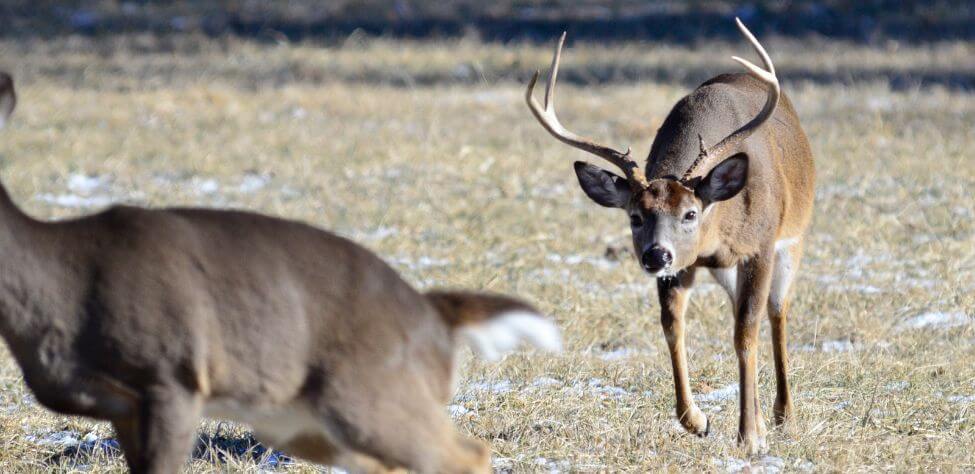
“When you’re rattling, you also should use cover scents like earth, fox or skunk scents, since often a big buck will circle downwind from the rattling to confirm with his nose what he’s heard with his ears. Too, put out a buck lure or doe urine. If the buck gets downwind and smells a hunter instead of what he believes to be other deer, he won’t come in to a region.
“How you rattle depends on the area you’re hunting. If you’re on property that doesn’t hold numbers of big, mature bucks, you won’t need to rattle often. Terrain is another factor that determines how much to rattle. If the cover is very-thick, rattle, and use a grunt call more often. If you can’t see 100 yards, and you don’t know what’s in front of you, rattle more often in very short intervals, with maybe 30 or 45 seconds between rattles. Then stop, and wait 15 minutes before repeating the sequence. If you’re hunting in open terrain and can see a long way, you don’t have to rattle nearly as much.
“Also rattling will be least effective after the rut is over. The majority of deer don’t want anything to do with a fight because they are tired and run-down. They prefer to stay away from fighting and feed.”
Summing Up Rattling:
To effectively rattle in bucks, remember what Rohm has mentioned – that deer often will use more than one of their senses to confirm what they believe to be true. For instance, if a deer hears antlers crashing, many times before going directly to the fight, he will want to hear other sounds that prove a fight actually is taking place. Using a grunt call when you rattle may spell the difference in your success.
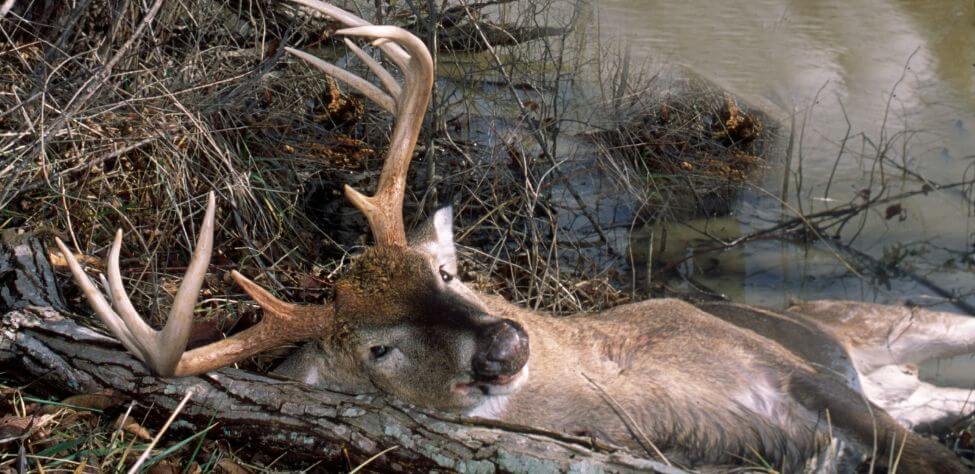
But even if the deer hears antlers clashing and the grunts of what he assumes to be two bucks pushing and shoving against each other, he still may move in downwind to try and smell either the estrous doe the bucks are fighting over or the strong urine smell of dominant bucks that have urinated on their tarsal glands. Often hunters who utilize scents and lures in combination with rattling antlers and grunt calls will be the most successful during a fake fight.
Bucks will be moving more frequently during the rut – chasing does and protecting their territory from intruder bucks. They also will go to investigate any buck fight they hear in their area during the rut. But because of the social nature of bucks, they may come to investigate what they assume to be a sparring match, even before the rut. If you understand why bucks fight and simulate the sounds a buck hears when a fight is taking place, you may be able to call more bucks to you this hunting season.

How to Hunt and Take Big Buck Deer on Small Properties
In this book, you’ll hear from 14 hunters who either have gained permission or leased properties as small as six acres to as much as 250 acres, and how they consistently take older-age-class bucks off these little lands.
VERSIONS: AUDIBLE, KINDLE & PRINT

Jim Crumley’s Secrets of Bowhunting Deer
Using a black magic marker and a gray work jumpsuit, Jim Crumley of Buchanan, Virginia, drastically changed the nature and purpose of hunting camouflage when he created the first sportsman’s camouflage – Trebark. Crumley’s love of bowhunting and his desire to be more invisible changed hunting clothing forever.
In this hunting guide, he shares the wisdom that he’s learned throughout his lifetime about how to be a hunter, how to find a deer lease, how to scout for deer, and more.
Special features include how to:
- Have a magic 60 acres to hunt
- Decide the best equipment to use
- Find deer year-round
- Locate land to hunt
- Know the best place to put your tree stand
- Get bucks within bow range
VERSIONS: AUDIBLE, KINDLE & PRINT

How to Hunt Deer Like a Pro
How do you know if the land you hunt has a trophy deer on it? Wildlife manager Bob Zaiglin, of Uvalde, Texas and Jim Crumley, the father of modern-day hunting camouflage, tells you how to find out. GPS can make finding and taking that trophy buck easier. This hunting guide will teach you how to hunt big bucks where no one else can find them, how to call deer, and how to become versatile as a deer hunter, so that if one deer tactic doesn’t work, another one will.
In the chapter, “How to find Bucks at Scrape,” Dr. Keith Causey, retired professor of Wildlife Science at Auburn University, describes the best way to hunt a scrape.
Brad Harrison of Neosho, Missouri, is a nationally-known videographer, professional deer hunter and master at calling deer. Another master is Will Primos of Primos Game Calls. These two experts will tell the best deer calls and when to use them in this book.
And for over 20 years, Bo Pitman, lodge manager of White Oak Plantation, has been studying deer movement patterns. He explains what types of conditions are best for predicting deer movement.
VERSIONS: AUDIBLE, KINDLE & PRINT

Deer hunting and deer hunters are drastically changing each year. To learn new techniques for hunting deer and have more places to hunt, I’ve interviewed some of the best deer hunters in the nation and share their tactics in How to Hunt Deer Like a Pro: Volume II.
In Chapter 10, Jacob Lamar tells you his tactics for consistently taking older-age-class bucks on public lands in several states. Chapter 11, Bob Walker explains how to find places on public lands where you can hunt that 99 percent of the other hunters never have considered hunting. The Bonus Chapter with David Ramey tells you how, where, when and with what equipment to take big Kansas bucks on public lands by hunting in 100-degree weather when others won’t hunt.
Chapter 13, Mark Drury, his family and his guests take mature bucks every season by having more small places to hunt rather than one large property. Drury explains the strategy of having satellite farms to hunt that only may be 50-150 acres each or less. Chapter 15, Pat Reeve, who hunts far-northern states and Canada, says, “I don’t like hunting for mature bucks until the weather is 20 degrees or less.” Chapter 4, Dr. Larry Marchinton says that funnels are the most-reliable stand sites to hunt for big bucks and tells why.
VERSIONS: AUDIBLE & PRINT

